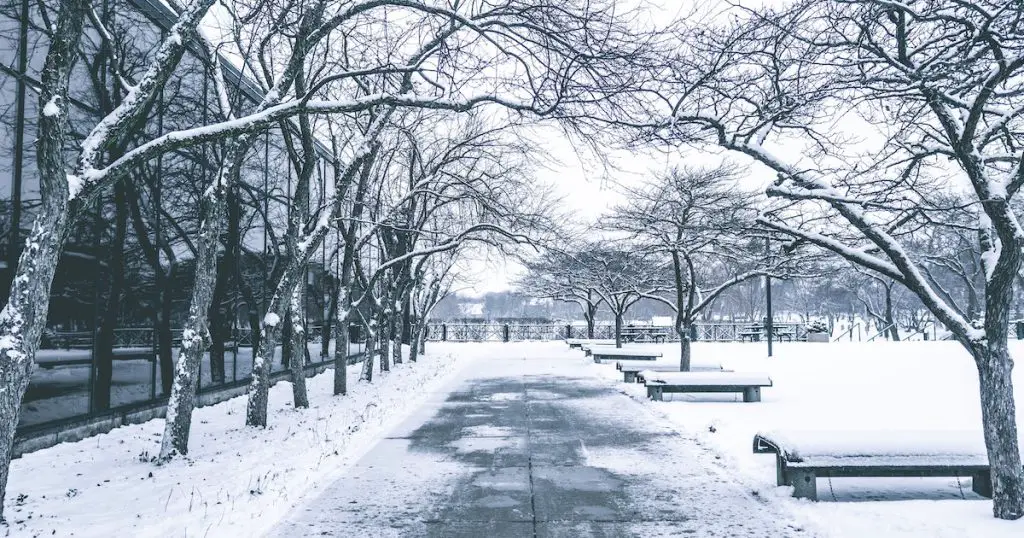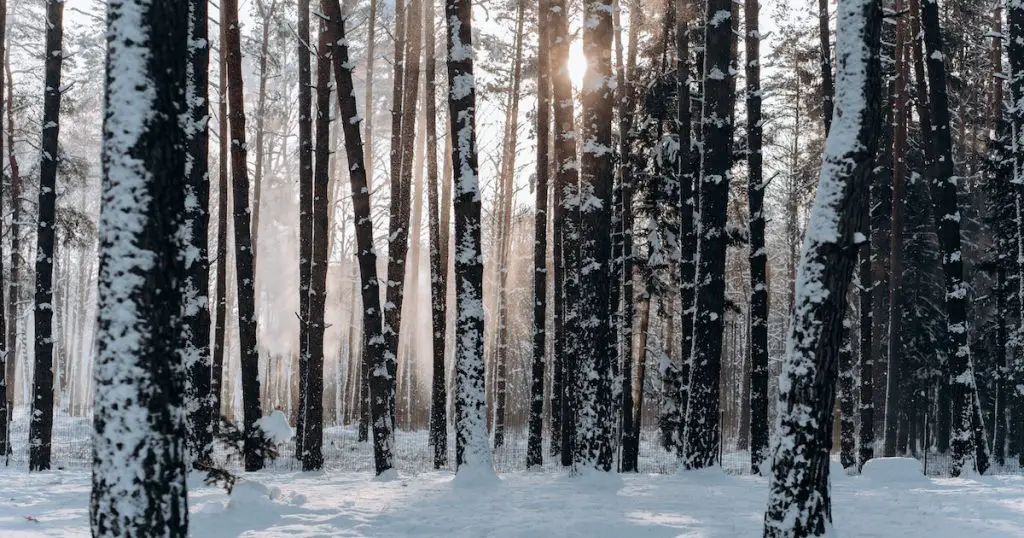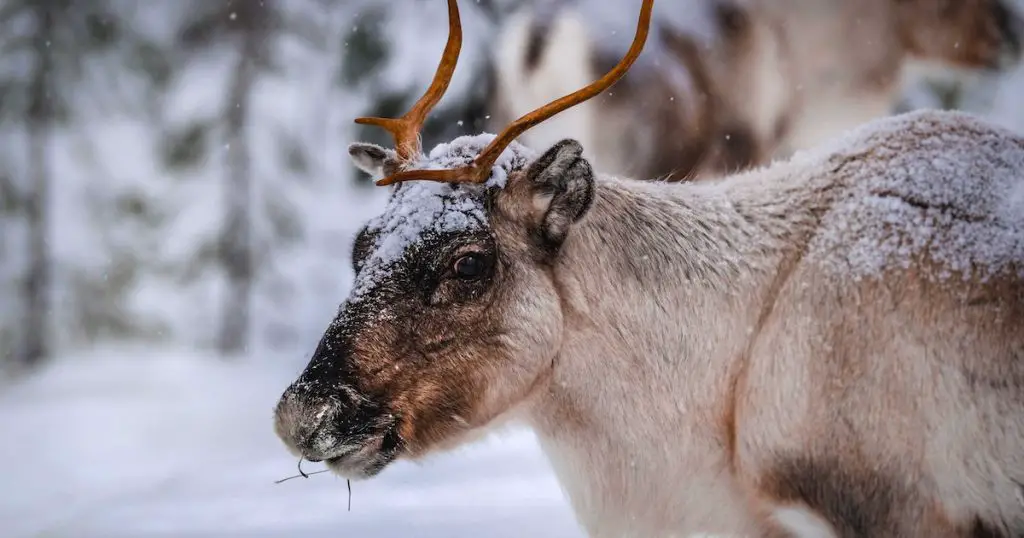When we talk about snowfall in Arizona, it’s easy to imagine the state’s northern regions, with locales like Flagstaff and the Grand Canyon often making headlines for their impressive winter snow. But let’s shift our gaze a bit to the southwest, where nestled in the Bradshaw Mountains, the city of Prescott offers its unique version of winter.

The average snowfall in Prescott, AZ, often comes as a surprise to many, given the popular perception of Arizona as a state of deserts and arid landscapes.
Understanding snowfall patterns, especially in places like Prescott, which have a semi-arid climate, offers fascinating insights. It affects not only the lifestyle and economy of the region but also has far-reaching impacts on the local ecology and environmental dynamics.
Geographical Setting: Prescott, AZ
Prescott, a charming city in Yavapai County, Arizona, is uniquely positioned in the Bradshaw Mountains of central Arizona. The city, with its semi-arid climate, experiences a weather phenomenon that beautifully balances between a desert and highland climate.
This duality not only makes for fascinating weather patterns but also contributes to the city’s appeal among tourists and residents alike.
The relationship between Prescott’s unique geographical location and its climate is integral to understanding its snowfall patterns. Positioned at an elevation of 5,368 feet, the city experiences mild to moderate snowfall, especially during the peak winter months.
Unlike its higher altitude counterparts, Prescott gets just enough snow to paint the town white without being overwhelmingly severe or disruptive.
Historical Perspective on Snowfall in Prescott, AZ
Historically, snowfall patterns in Prescott present an intriguing tale. Over the last century, the city has witnessed an interesting dance of fluctuation, with years of heavy snowfall interspersed with periods of lighter snow. As per the National Weather Service, the annual average snowfall in Prescott hovers around 12.8 inches, with some years registering significantly more.
The year 1973 holds the record for the most snow in a single day in Prescott history. A snowstorm swept across northern and central Arizona in early January that year, dropping a staggering 24 inches of snow in a 24-hour period in Prescott. It remains a significant event in the city’s weather annals and continues to be a benchmark against which other snowfall events are measured.
Seasonal Breakdown of Snowfall in Prescott, AZ
When it comes to snowfall, the calendar year in Prescott is broadly divided into the early, mid, and late winter months, each with its unique snowfall patterns.
December typically marks the onset of winter in Prescott. The month tends to be a gentle introduction to the season, with snowfall levels relatively moderate compared to the following months. On average, Prescott sees approximately 3.6 inches of snow in December, according to data from the US Climate Data.
This early winter snow often arrives with an air of festivity, transforming the city into a postcard-worthy landscape, just in time for the holiday season. The city’s annual Christmas Lighting and the famed Courthouse Lighting attract numerous visitors, who are often delighted by the light dusting of snow that adorns the city during this period.
Snowfall Patterns in Mid-Winter (January)
January is when winter truly settles in Prescott. It is the month that sees the most snowfall, with an average accumulation of about 5 inches, as reported by the National Weather Service. During this period, the city is often cloaked in white, creating a picturesque winter wonderland.

Despite the increase in snowfall, life in Prescott continues unabated. Thanks to the city’s efficient snow management system, disruptions are minimal, and residents are well-equipped to handle the winter months.
Understanding the Meteorological Factors Impacting Snowfall
Weather phenomena, as we know, are complex systems influenced by various factors. When it comes to snowfall in Prescott, several meteorological elements come into play.
Temperature and humidity are crucial determinants of snowfall. For snow to form, the atmospheric temperature needs to be at or below freezing (0 degrees Celsius or 32 degrees Fahrenheit). In Prescott, winter temperatures often fall within this range, creating favorable conditions for snow.
Humidity, or the amount of water vapor in the air, also plays a significant role. Higher humidity levels can lead to heavier snowfall. According to the University of Arizona’s Climate Science Applications Program, humidity levels in Prescott’s winter months are conducive to periodic snowfall.
Impact of Atmospheric Pressure on Snowfall
Atmospheric pressure, another key factor, influences where and when the snow will fall. Lower pressure allows air to rise and cool, leading to condensation and cloud formation. If temperatures are low enough, this process results in snow.
Prescott’s position in the Bradshaw Mountains contributes to variations in atmospheric pressure, which in turn impact the city’s snowfall patterns.
How Wind and Weather Fronts Affect Snowfall
The wind is an underrated player in the game of snowfall. It influences not only the distribution and accumulation of snow but also the formation of snowflakes themselves. As the National Snow and Ice Data Center explains, wind patterns determine the temperature and humidity of the air, which are crucial factors in the creation of snowflakes.
Moreover, the direction of the wind often brings different weather fronts, carrying varying levels of moisture, which directly impacts snowfall. In Prescott, prevailing winter winds often come from the northwest, bringing in cold, moist air conducive to snowfall.
Comparing Prescott’s Snowfall to Other Arizona Locations
Arizona’s diverse topography gives rise to an equally diverse climate. This diversity is perhaps nowhere more apparent than in the state’s snowfall patterns.
Flagstaff, located in the northern part of Arizona, is one of the snowiest cities in the United States. The city receives an average snowfall of around 100 inches per year, according to the Flagstaff Climate Data. This amount dwarfs Prescott’s average snowfall, showcasing the dramatic difference in winter weather within the same state.
Snowfall in Prescott in Comparison to the Grand Canyon Area
Similarly, the Grand Canyon area, another high-altitude region in Arizona, also sees significant snowfall. According to the National Park Service, the Grand Canyon’s South Rim receives about 60 inches of snow annually. This figure contrasts with Prescott’s lower average, highlighting the influence of altitude on snowfall levels.
The Effects of Snowfall on Prescott’s Ecosystem
Snowfall, beyond its visual appeal and recreational value, has profound effects on the local ecosystem.
In Prescott, the winter snow acts as a crucial source of hydration for the local flora. When the snow melts, it seeps into the ground, recharging the soil with much-needed moisture. This moisture benefits various species of plants and trees, such as the Ponderosa Pine and the Alligator Juniper, which are common in the area.

Impact on Fauna: Wildlife and Bird Species
Snow also impacts the fauna in the Prescott region. Many animals, like deer and elk, adapt to the snowy conditions by changing their feeding patterns.
According to Arizona Game and Fish Department, the snow also provides opportunities for various bird species, like the Dark-eyed Junco and the Mountain Chickadee, to forage for seeds and insects in the undergrowth.
Influence of Snowfall on the Life of Prescott Residents
The winter snowfall in Prescott, AZ, brings more than just a change in the city’s aesthetics. It significantly influences the day-to-day life of the residents.
Heavy snowfall can cause road conditions to deteriorate quickly, creating potential hazards for drivers. In Prescott, the city’s Public Works Department works tirelessly to ensure that roads are promptly cleared and salted to prevent ice build-up.
Infrastructure such as power lines and buildings are also monitored to manage the weight of the snow and prevent accidents.
Impact on Recreation: Winter Sports and Activities
The arrival of snow transforms Prescott into a winter sports haven. Snow-related activities like sledding, snowshoeing, and cross-country skiing become popular pastimes for locals and tourists alike. The nearby Prescott National Forest provides an ideal backdrop for these winter recreations.
Economic Implications: Effects on Local Businesses and Tourism
Snowfall also impacts the local economy, particularly businesses and tourism. While some sectors, like winter sports and outdoor gear retailers, experience a boost, others may face challenges due to weather-related disruptions.
Meanwhile, the tourism industry gets a mixed bag. The snow draws visitors eager for a winter getaway, but travel disruptions can affect tourist arrival rates.
The Future of Snowfall in Prescott: Climate Change Perspectives
As the world grapples with climate change, it’s worth asking – what does the future hold for snowfall in Prescott, AZ?
According to projections from Climate Central, warming temperatures could lead to a shift in snowfall patterns in Prescott. While winters may see more rain than snow, the occasional snowfall could be more intense, thanks to increased moisture in the atmosphere.
Potential Impacts on Prescott’s Ecosystem and Community

Such changes could have far-reaching effects on both the local ecosystem and the community. Altered snowfall and snowmelt timings could disrupt the life cycles of local flora and fauna. Meanwhile, the community may need to adapt to new weather patterns, which could affect everything from public safety measures to the local economy.
Frequently Asked Questions:
In this section, we will be delving into some of the most common inquiries and curiosities that surround our topic.
What’s the most snow Prescott has ever received?
In January 1973, Prescott recorded the most snowfall in a single day, with a snowstorm delivering 24 inches of snow.
How does Prescott’s snowfall compare to other cities in the U.S.?
Prescott’s annual average snowfall is significantly less compared to some other cities like Flagstaff, which receives around 100 inches of snow annually.
How does snowfall impact daily life in Prescott?
Snowfall impacts various aspects of daily life in Prescott, from road conditions and public safety to recreational activities and local businesses.
What can we expect in terms of snowfall in Prescott in the future?
Climate change predictions indicate a potential shift in snowfall patterns, with more rain than snow in winters but the occasional snowfall possibly being more intense.
What safety measures should residents and tourists take during heavy snowfall?
Residents and tourists should stay updated with weather reports, drive carefully, and be prepared with necessary supplies during heavy snowfall.
Conclusion: Average Snowfall In Prescott AZ
Prescott, AZ, with its unique climate and geographical location, offers a distinct snowfall pattern that shapes the life of its residents, local ecosystems, and even the city’s economy.
As we move forward in this era of climate change, understanding these patterns becomes more critical than ever. It helps us prepare, adapt, and ensure that Prescott continues to thrive as a vibrant community amidst its snowy winter backdrop.



Leave a Comment
You must be logged in to post a comment.